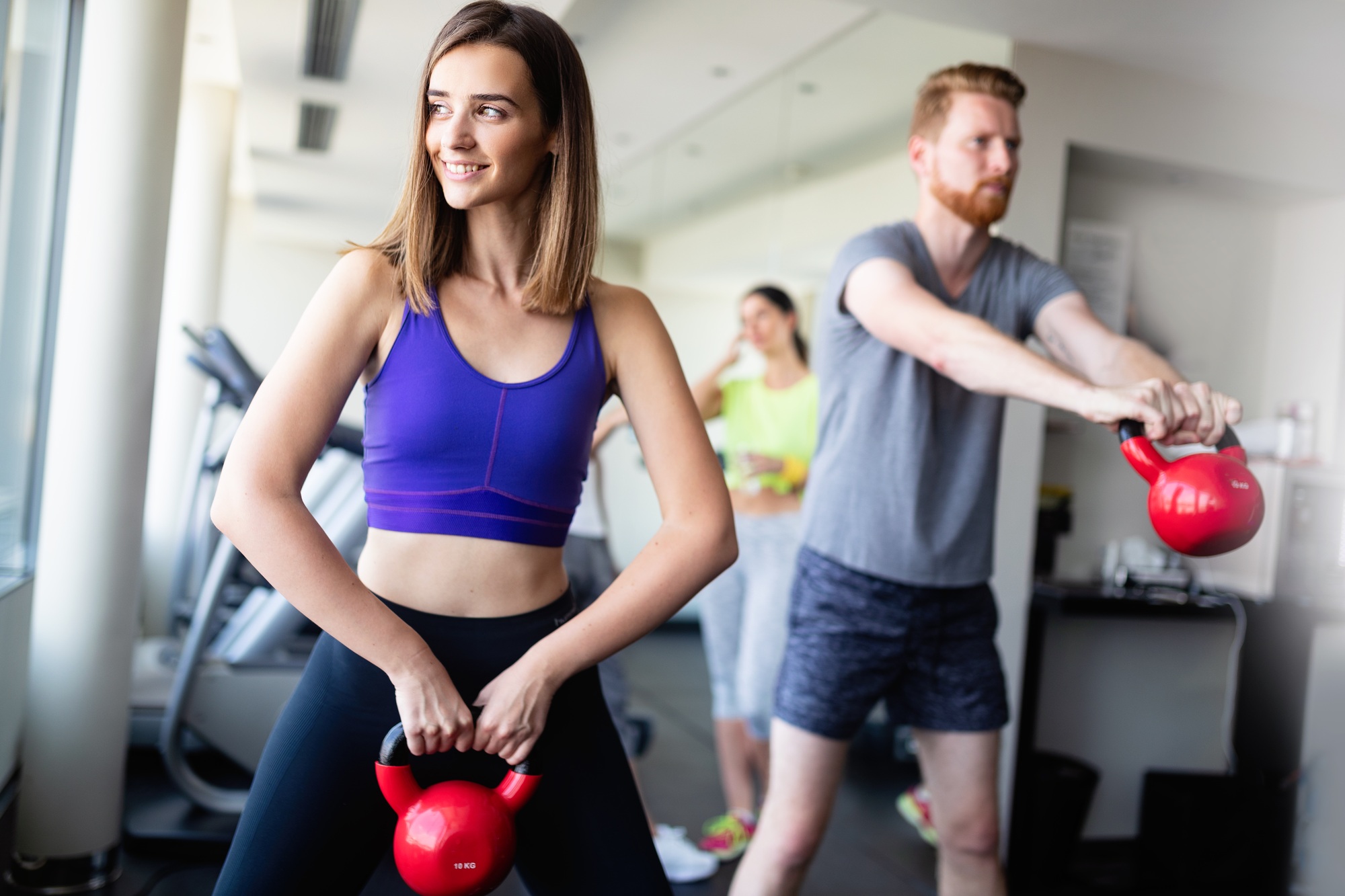Introduction
In today’s fast-paced world, people are no longer just chasing six-pack abs or massive biceps. Fitness is evolving — and one of the most powerful trends is functional fitness. Unlike traditional gym workouts that focus on isolated muscles, functional fitness is all about training your body for real-life movements.
Think about it: every day you bend, lift, twist, push, pull, squat, and carry things. Functional fitness prepares your body for exactly these types of movements, making you stronger, more mobile, and less injury-prone in daily life.
But what exactly is functional fitness? And how can you use it to improve your strength, flexibility, and endurance while burning fat and building muscle?
This complete guide will cover:
- ✅ What functional fitness really means
- ✅ The benefits of functional training
- ✅ Best functional exercises for beginners & advanced athletes
- ✅ Sample workouts you can try at home or in the gym
- ✅ How to combine functional fitness with strength & cardio
By the end, you’ll know how to train smarter — not just harder.
🔹 What is Functional Fitness?
Functional fitness is a style of training that mimics real-life movement patterns instead of focusing only on single muscles. The goal is not just to look fit, but to move better in everyday life.
For example:
- Carrying grocery bags → Farmer’s Carry
- Climbing stairs → Step-Ups
- Picking something off the floor → Deadlifts
- Sitting & standing → Squats
- Pushing a heavy door → Push-Ups
- Pulling open a drawer → Rows
👉 In short, functional fitness = strength + mobility + balance + coordination.
💡 Benefits of Functional Fitness Training
Functional training has gained huge popularity because it benefits everyone — from students and office workers to athletes and seniors.
✅ 1. Improves Everyday Strength
You’ll get stronger in the exact ways you use your body daily — lifting, twisting, pushing, pulling.
✅ 2. Prevents Injuries
By training stabilizer muscles, improving balance, and strengthening joints, functional training reduces the risk of common injuries.
✅ 3. Boosts Mobility & Flexibility
Functional moves increase your range of motion, making it easier to bend, squat, and move freely without stiffness.
✅ 4. Burns Fat & Builds Muscle
Full-body compound movements torch calories while building lean muscle at the same time.
✅ 5. Enhances Athletic Performance
Athletes in all sports use functional training to improve speed, agility, and coordination.
✅ 6. Suitable for All Ages
From young athletes to seniors, functional exercises can be adapted to anyone’s fitness level.
🔥 Best Functional Fitness Exercises (Real-Life Movements)
Here are the top functional exercises that mimic real-life activities and train multiple muscles at once:
1. Squats – Everyday Sitting & Standing
Muscles Worked: Legs, Glutes, Core
2. Deadlifts – Lifting Objects Safely
Muscles Worked: Hamstrings, Glutes, Back, Core
3. Lunges – Walking, Climbing Stairs
Muscles Worked: Quads, Glutes, Core
4. Push-Ups – Pushing Movements
Muscles Worked: Chest, Triceps, Shoulders
5. Pull-Ups / Rows – Pulling Movements
Muscles Worked: Back, Biceps, Core
6. Planks – Core Stability
Muscles Worked: Abs, Lower Back, Shoulders
7. Farmer’s Carry – Carrying Groceries / Luggage
Muscles Worked: Grip Strength, Shoulders, Core, Legs
8. Step-Ups – Climbing Stairs
Muscles Worked: Quads, Glutes, Hamstrings
9. Medicine Ball Slams – Throwing / Explosive Power
Muscles Worked: Core, Shoulders, Arms, Legs
10. Kettlebell Swings – Power & Balance
Muscles Worked: Glutes, Hamstrings, Core
💡 Pro Tip: Always focus on form first, then gradually add resistance (weights, kettlebells, resistance bands).
🏋️♂️ Functional Fitness Workouts You Can Try
Here are some ready-to-use workout plans:
🔹 Beginner Functional Workout (No Equipment)
- 10 Bodyweight Squats
- 10 Push-Ups (knee push-ups if needed)
- 10 Step-Ups (on a bench or chair)
- 30-second Plank
- 10 Walking Lunges
Repeat 3 rounds.
🔹 Intermediate Functional Workout (With Dumbbells or Kettlebell)
- 10 Deadlifts
- 12 Dumbbell Rows
- 12 Overhead Press
- 15 Kettlebell Swings
- 40-meter Farmer’s Carry
Repeat 4 rounds.
🔹 Advanced Functional HIIT Circuit
- 15 Burpees
- 12 Pull-Ups
- 15 Weighted Squats
- 15 Push-Ups to Row
- 20 Medicine Ball Slams
Repeat 4–5 rounds with 60 seconds rest.
⚖️ Functional Fitness vs. Traditional Training
| Aspect | Functional Fitness | Traditional Bodybuilding |
|---|---|---|
| Goal | Real-life strength, mobility, endurance | Aesthetic muscles |
| Movements | Compound, multi-muscle | Isolated (e.g., bicep curls) |
| Injury Prevention | High | Low (overuse risk) |
| Calories Burned | High | Moderate |
| Accessibility | Minimal equipment needed | Gym required |
👉 If you want practical strength, fat loss, and everyday fitness, functional training is superior.
👉 If your goal is purely muscle size & looks, bodybuilding is more focused.
🥗 Nutrition + Recovery for Functional Fitness
Training is only half the equation. To maximize fat loss, muscle gain, and energy:
- Eat balanced meals → lean protein, healthy fats, complex carbs.
- Stay hydrated → water supports performance.
- Prioritize protein → 1.2–2g per kg of body weight daily.
- Rest & sleep → recovery builds stronger muscles.
- Active recovery → walking, stretching, yoga.
⚠️ Common Mistakes in Functional Training
- ❌ Ignoring form → leads to injuries.
- ❌ Skipping warm-up / mobility work.
- ❌ Doing too much too soon (overtraining).
- ❌ Only focusing on strength, ignoring flexibility.
- ❌ Not balancing push vs. pull movements.
🎯 Final Thoughts
Functional fitness isn’t just a trend — it’s the future of training. By focusing on movements instead of muscles, you’ll not only look fit but also move better, feel stronger, and live healthier.
Whether you’re an athlete, a busy professional, or someone just starting out, functional training can be tailored to your needs. Start simple, stay consistent, and you’ll see results that last far beyond the gym.
📌 FAQs
1. What is the difference between functional fitness and regular gym workouts?
Functional training focuses on movement patterns (push, pull, squat, carry), while regular gym workouts often isolate single muscles.
2. Can I lose weight with functional fitness?
Yes! Functional workouts are full-body, burn lots of calories, and build lean muscle.
3. Do I need equipment for functional training?
Not always. Bodyweight exercises like squats, planks, and lunges are highly effective. Equipment like kettlebells, dumbbells, and medicine balls can enhance progress.
4. How many days a week should I do functional fitness?
3–4 times per week is ideal for beginners. Advanced athletes may train 5–6 times.
5. Is functional fitness good for seniors?
Absolutely! It improves balance, coordination, and strength — reducing risk of falls and injuries.

Lorem ipsum dolor sit amet, consectetur adipiscing elit. Nibh vel sed amet, ut adipiscing elit fermentum. Orci, feugiat ullamcorper molestie maecenas tincidunt









Leave feedback about this